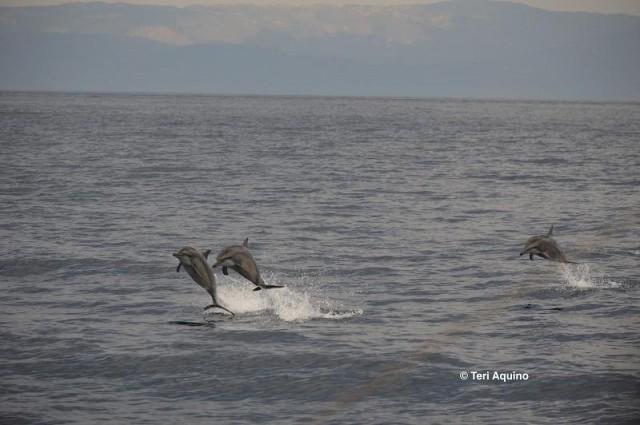Dwarf spinner dolphins spotted in Tañon Strait
For the very first time, dwarf spinner dolphins were spotted in Tañon Strait, a narrow marine corridor between Cebu and Negros in early May.
It is among the six species of marine life that was recorded and photographed during a survey, led by the multi-agency team led by the Department of Environment and Natural Resources and international conservation group Rare.
According to lead researcher Dr. Teri Aquino, this is the only second site in the Philippines where the subspecies [dwarf spinner dolphin] has been documented.

“The first was in 2006 in the waters surrounding Balabac Island in southern Palawan, which led by Dr. Louella Dolar’s team,” Dr. Aquino said in a social media post.
During the May survey, six species in total were recorded and photographed, including the spectacular Risso’s dolphins and a single dwarf sperm whale floating serenely barely visible above water.
But the number of dolphins and whales recorded was well below those from previous surveys.
According to survey team leader Joe Pres Gaudino of Rare, Dolar’s previous expeditions in Tañon Strait from two decades ago recorded hundreds of dolphins and more frequent sightings. This time around, sightings were few and far between, with the number of dolphins down to just dozens.
RELATED: These 7 trippy scenes from 'Our Planet' show how lucky we are to be living on earth
The Marine Mammal Protected Areas Task Force, an experts’ group supported by the International Union for the Conservation of Nature, has named Tañon Strait an important Marine Mammal Area because of the diversity of species found in the channel. Fourteen have been recorded so far.
In 1998, it was declared a protected seascape because of its importance as a habitat and migratory path of marine mammals, which are facing increasing threats like pollution and climate crisis.
“Because they are highly migratory, large marine life are good indicators of the health of Tañon Strait. If they are still abundant, it means Tanon Strait is doing well as a marine key biodiversity area,” Dr. Vincent Hilomen, Smartseas program project manager said. — LA, GMA News




